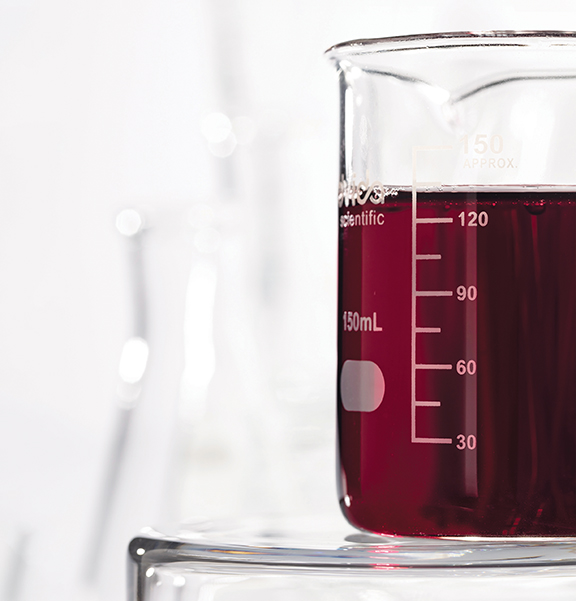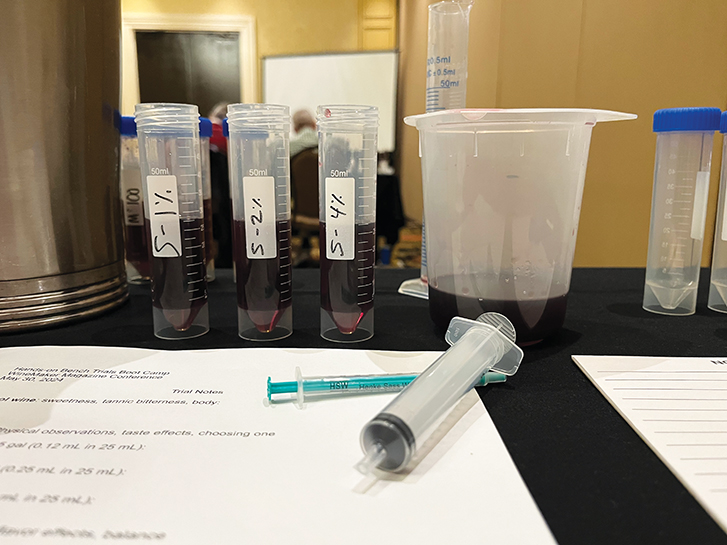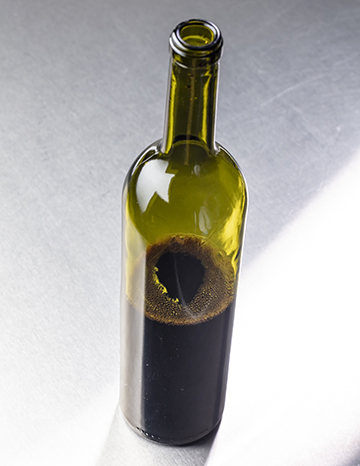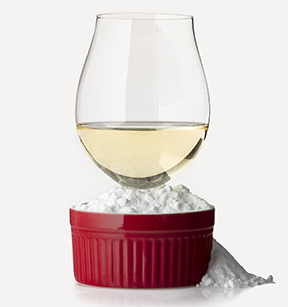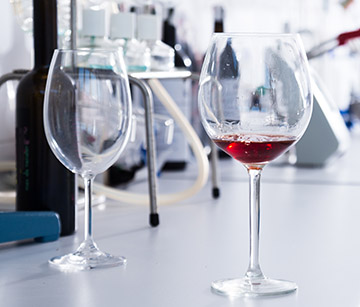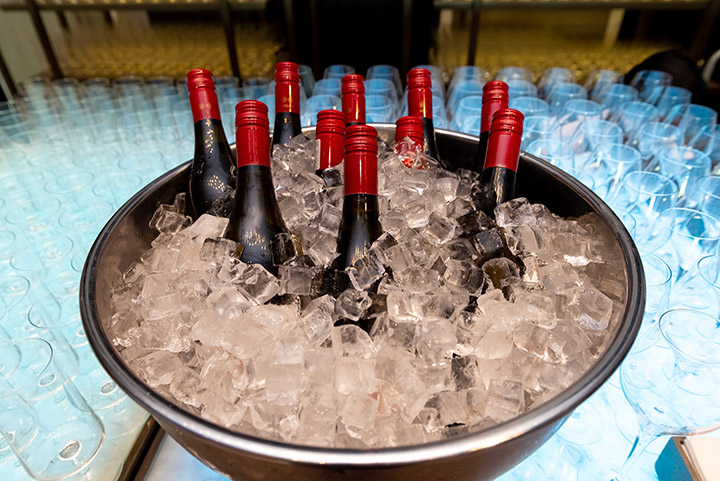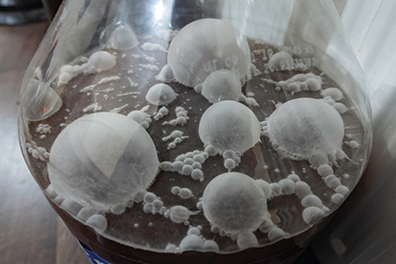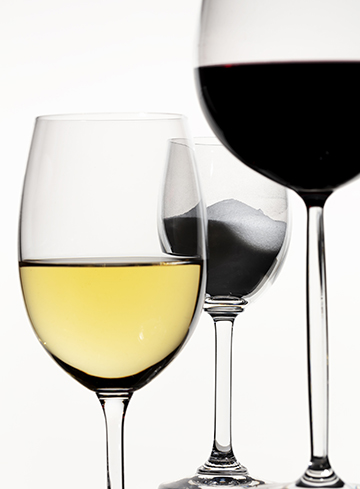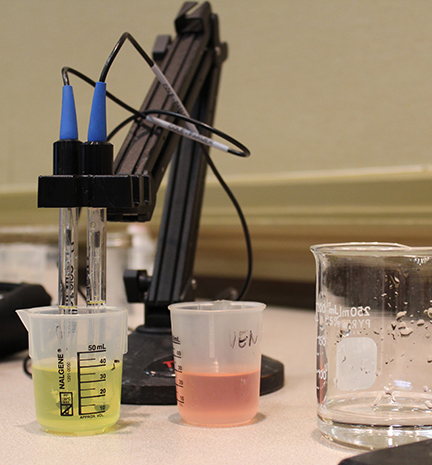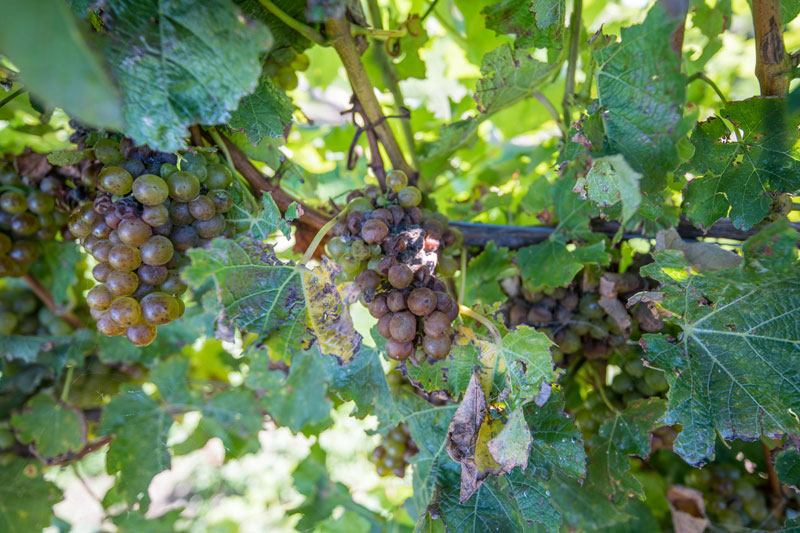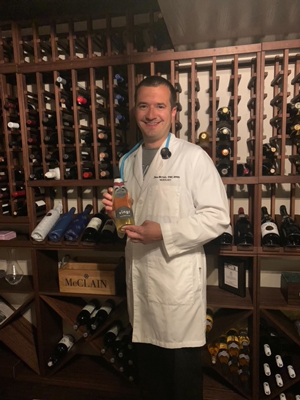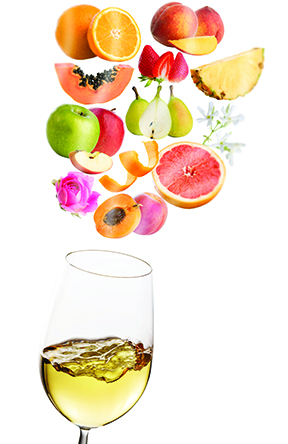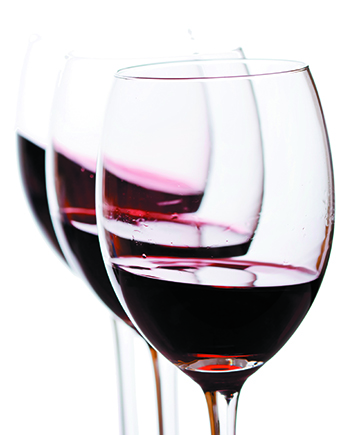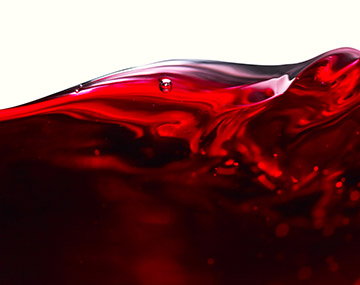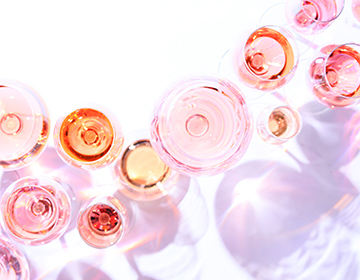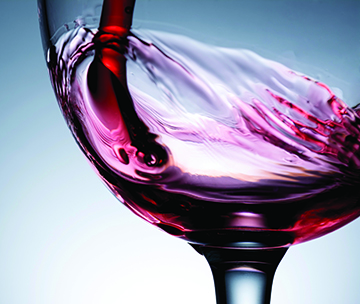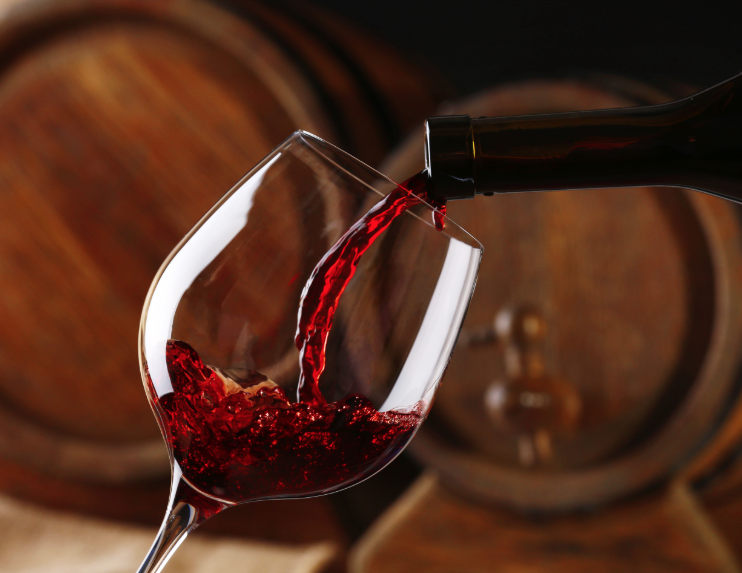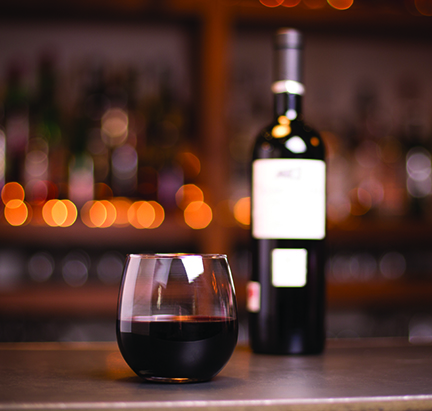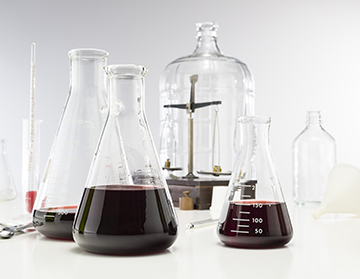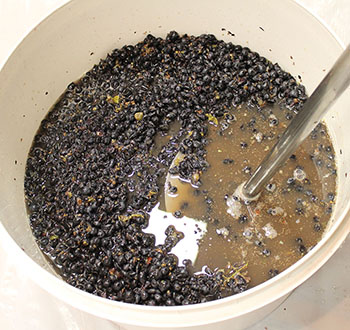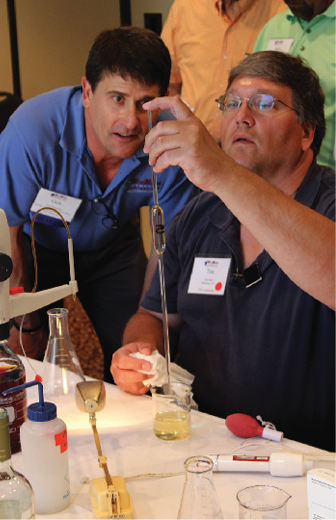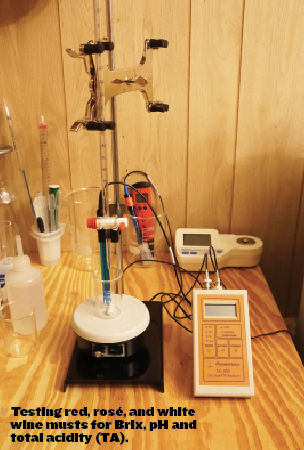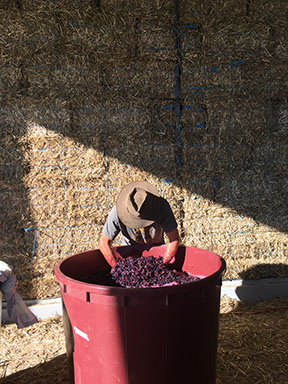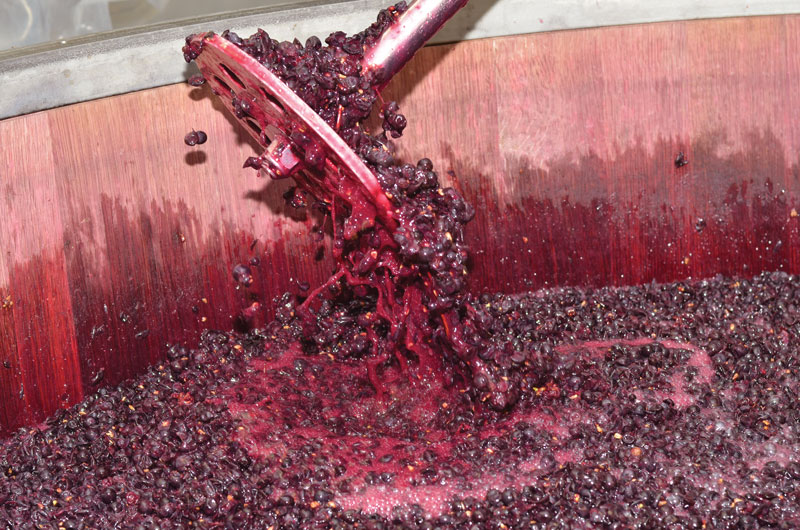Articles
Topic: Winemaking Science
Performing Winery Lab Tests
Take the guesswork out of winemaking by performing tests on your juice, must, and wine. We run through the most critical tests, as well as how and when they should be done.
Performing Benchtop Trials
When changes to aroma or structure are desired to achieve a more balanced, pleasing wine, you should always start with benchtop trials to dial in optimal addition rates. Learn how to get the most from your trials before adjusting your entire batch.
Understanding and Measuring Residual Sugars
Looking at Brix (or specific gravity) alone isn’t a great indicator whether a wine is microbially stable, and therefore determining if there is risk of refermentation. Even home winemaking tools that measure residual sugar lump fermentable and non-fermentable sugars together. After years of performing tests, Daniel Pambianchi explains how winemakers can predict with confidence whether their wines are safe to bottle.
Chitosan: For more than just fining
Chitosan is a product every home winemaker should be familiar with, and likely has around their cellar. It is used to help clarify wine, but its benefits go well beyond that. Newer chitosan-based products are also beneficial for microbial stability as well as malolactic and acetic bacteria suppression.
Game-Changing Innovations
A number of innovative products well-suited for the home and small-scale winemaker have come to market in recent years. Explore these options that can help in your winemaking hobby — from ingredients, wood products, and yeasts, to analytical tools and other winemaking equipment.
Dubunking Consumer Myths, Yeast Impact on MLF & pH Adjustments
If you sometimes prefer your red wines served a little on the cool side or are not afraid of buying high-end wines with screw cap closures, you aren’t alone! The Wine Wizard shares her “consumer myths” that need to be debunked. Plus, the role your yeast choice plays on malolactic fermentation, and advice on adjusting a high-pH juice.
Understanding and Controlling Brettanomyces
It is both a spoilage yeast and the heart of many great wines of Bordeaux. We share what you need to understand about Brettanomyces, the common misconceptions, and methods to tame this wild yeast.
Sulfur Dioxide: Fact and Myth
Winemakers have a lot of misconceptions about sulfur dioxide and its use in winemaking. Though somewhat controversial, longtime wine educator Clark Smith shares his views that are backed by science.
The Science of Winemaking
There is a lot of chemistry involved in winemaking — the better you understand it, the better chance you have of consistently making quality wine. Learn the role science plays and how to use it to your advantage when it comes to Brix, pH, titratable acidity, and more.
Protection from the Elements
Heat (protein) and cold (bitartrate) stability issues in wine cause off-putting aesthetic defects that are often brought to light after the wine is in the bottle and undergoes a temperature swing if not taken care of during bulk aging. Learn how (and if) you should take these heat and cold stabilization precautions at home.
Volatile Acidity Basics
It’s a dirty phrase in most winemaking circles, but volatile acidity is found in all wine and having a little can actually add complexity to a wine. Get the scoop on volatile acidity.
Spit Or Swallow? Health benefits from spitting wine
One reader who is also a medical doctor discusses the potential health benefits of wine tasters who swish and spit their wines. It may be one of the healthiest things you can do . . . but that doesn’t mean he abides by the spitting aspect.
The Role of Varietal Thiols in White Wines
Volatile thiols are delicate but powerful aromatic compounds released during fermentation. Through careful techniques and yeast selection, these thiols can be both preserved and enhanced to create an aromatic wine that pleases the senses.
Additives to Impact Phenolics and Tannins
Explore the additives and fining agents common in commercial wine production and available to home winemakers. These tannin additives and fining compounds may be used to modify the quantity of different phenolic species, and thus impact the color, bitterness, and astringency of the treated wine.
Phenolics in Red Wines
The decisions you make in the process of red winemaking will dramatically impact the phenolics and tannins in the resulting wine. From maceration temperature to techniques like délestage, saignée, and thermovinification, you control how your wines will turn out.
Phenolics & Tannins in White, Sparkling & Rosé Styles
Polyphenolics are usually associated with red wines, but there are definitely processing choices and stylistic options where polyphenolics play a role in whites, rosé, and sparkling wines also.
Phenolics and Tannins
An understanding of what is happening in wine on a chemical basis can be very useful in influencing choices regarding processing options and timing of activities for different wine styles. Unfortunately winemaking
Oxygen Management for Home Winemakers
Oxygen exposure can cause a whole litany of flaws in wine. Learn strategies for minimizing the risks at all steps of your winemaking.
Lower Alcohol Wines
Rising temperatures have led to grapes that are higher in sugar and lower in acid at harvest. Winemakers are beginning to look at microbial strategies to help keep wines in balance with lower alcohol levels and increased acidity.
At Home in the Wine Lab
Whether it is just the basics (Brix, pH, etc.) or more advanced (free SO2, yeast assimilable nitrogen, etc.) all home winemakers should perform some tests to monitor their wines.
Understanding YAN
If you want to make good homemade wine, you should learn to manage your wines’ YAN — yeast assimilable nitrogen.
Wine Science 101
A Brief Glossary of Some Key Terms Brix: A scale of measuring sugar concentration in grapes, juice, must and wine. Instruments such as refractometers and hydrometers are used to measure degrees Brix
Year in a Life of a Wine: Part III (Testing & Adjusting)
In the third installment of our year-long series about how homemade wine is made using home-grown grapes in Upstate New York, we check in on batches of red, white, and rosé wines happily fermenting away.
Wines, Naturally
Do you know the difference between organic, biodynamic, and natural wines? Learn what differentiates each term, plus ways to cut down on the chemicals in your winemaking process.
